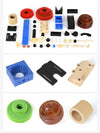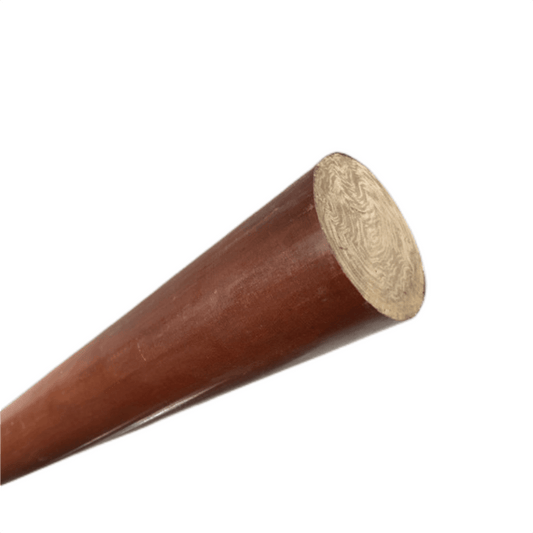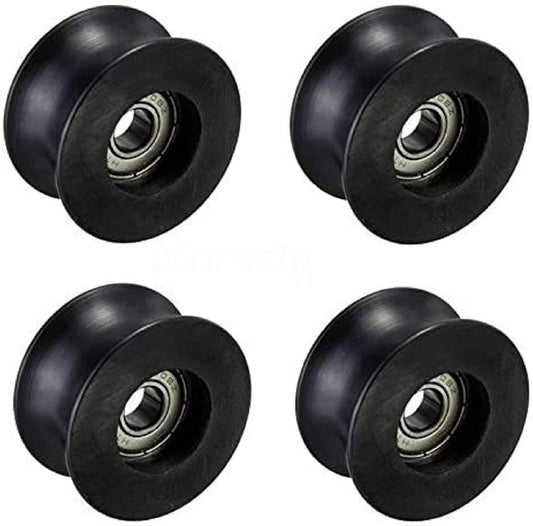Polyetherimide (PEI) plastic has become an increasingly popular engineering thermoplastic in recent years, owing to its exceptional mechanical, thermal, and chemical properties. With high heat resistance, mechanical strength, and dimensional stability, PEI offers unique solutions for components and parts across various industries including aerospace, automotive, healthcare and more. This article focuses on advanced custom processing techniques for PEI plastic that enable manufacturers to achieve precision and quality results as per application requirements.
We will discuss key aspects of understanding PEI plastic, specialized fabrication methods, tailored solutions for different needs, prototyping, precision engineering, and common challenges and solutions in processing this versatile material. Whether you are looking to produce PEI prototypes, scale up to mass production, or require tight tolerances and fine surface finishes, choosing the right processing techniques is crucial. Read on as we explore mastering custom PEI plastic processing for enhanced performance.

Understanding PEI Plastic
PEI, also known as polyetherimide, is an amorphous, transparent thermoplastic with exceptional temperature and chemical resistance properties. With a glass transition temperature of 217°C and melting point of 217°C, PEI plastic retains good mechanical properties and dimensional stability at high temperatures.
Key properties that make PEI a popular choice across industries include:
- High heat resistance and thermal stability
- Excellent mechanical strength and rigidity
- Low smoke and toxic fume generation
- Good chemical and solvent resistance
- Dimensional stability across temperature fluctuations
- Good electrical insulating properties
- Flame retardance and UL 94 V-0 rating
- Aesthetic clarity and polishability
Owing to this unique combination of properties, PEI finds widespread use in aerospace, automotive, healthcare, semiconductor, oil and gas, and other demanding applications. From structural aircraft components to medical devices and electronics parts, PEI provides durability, chemical inertness, heat resistance, and precision. Understanding the characteristics and capabilities of this engineering thermoplastic is key to leveraging its full potential through customized processing.

Custom PEI Techniques for Enhanced Performance
While PEI plastic has inherently good properties, utilizing advanced processing techniques can further enhance its performance, precision, and aesthetics for specific applications. Some key techniques include:
Precision Machining - PEI is suitable for precision machining processes like milling, turning, drilling, tapping etc. This enables fabricating dimensionally accurate PEI parts with good edge finish and surface quality. Processes like CNC machining allow custom machined features, holes, slots, threads etc. in PEI.
Injection Molding - For high volume manufacturing, injection molding can produce complex, tight tolerance PEI plastic parts by forcing molten PEI into mold cavities. It enables adding custom shapes, bosses, inserts, threads etc.

Extrusion - PEI plastic extrusion creates long straight profiles for applications like tubes, rods, window glazing etc. Co-extrusion can combine PEI with other materials for unique properties.
Thermoforming - Heated PEI sheets can be vacuum/pressure formed over molds to make customized enclosures, trays, lenses etc. It offers design flexibility for both prototypes and production.
3D Printing - PEI filaments allow additive manufacturing of custom plastic parts with complex geometries not possible through conventional methods. It enables rapid prototyping.
Surface Treatment - Secondary finishing processes like vapor smoothing, flame polishing, sanding, painting etc. can enhance the aesthetics and texture of PEI plastic parts.
Post-Processing - Annealing, machining, boring, welding help meet precise dimensional and tolerance requirements for PEI parts.
Choosing the right techniques and process parameters is key to meeting design goals with PEI plastic. Precision engineering equips manufacturers with the capabilities for custom results.
Tailored Solutions in PEI Plastic Fabrication
An exciting aspect of custom PEI plastic processing is the ability to tailor solutions for specific application requirements across industries.
For example, in aerospace engineering PEI is often used for precision structural brackets, connectors, housings, and insulation components. Meeting tight tolerances, smooth surface finish, dimensional stability at temperature extremes, and flame retardance are critical here. Processes like CNC machining, injection molding, annealing allow aerospace-grade PEI part fabrication.
The healthcare industry takes advantage of PEI's sterilization capability, biocompatibility and chemical resistance to create customized components for medical devices like dialyzers, neurostimulators, surgical tools etc.
Automotive engineers employ molded PEI for lighting components, electrical insulators, connectors that must perform in high heat and humidity conditions in the engine compartment and withstand vibrations.
PEI's heat and chemical resistance enables specialized fabrication in semiconductor front-end applications like wafer carriers, bell jars, transport modules, wet benches etc.
Thus by selecting suitable techniques, custom PEI plastic solutions can be tailored to vastly different needs across industries.

Advanced Techniques in PEI Plastic Processing
Now let's look at some of the advanced techniques for processing PEI in detail:
CNC Machining - Computer numerical control (CNC) machining is widely used for fabricating high precision custom PEI parts in small batches. The automated process can create complex 3D geometries unattainable through other methods. Precision capabilities like tight tolerances up to +/-0.005", smooth surface finishes up to 2 Ra, multi-axis milling, contouring make CNC an ideal PEI machining method.
Injection Molding - From prototypes to up to millions of parts, injection molding offers accuracy, repeatability and design flexibility for PEI plastics. Complex parts with intricate features, multi-cavity molds, multi-component construction, and overmolding can be achieved through this automated technique. Injection molding parameters like temperature, pressure, timing, clamping force etc. can be optimized for PEI's melt rheology.
Extrusion - For long continuous profiles, extrusion process offers quick fabrication of tubes, rods, sheets in PEI. Temperature-controlled extrusion and downstream drawing help obtain dimensional accuracy and desired material properties like improved tensile strength. Co-extrusion allows combining PEI with other polymers for unique functional properties.
Thermoforming - Heated PEI plastic sheets can be thermoformed over temperature-controlled molds using vacuum, air pressure, or mechanical methods to produce custom enclosures, trays, lenses etc. Design flexibility, fast turnaround, and ability to consolidate parts makes thermoforming ideal for small-medium production scales.

PEI Plastic Prototyping to Production
Many custom PEI plastic applications begin with prototyping to validate the design. As quantities scale up, production processes come into play.
For quick turnaround prototypes, CNC machining and 3D printing offer the flexibility to create custom PEI plastic parts from CAD models without the need for hard tooling like molds and dies. This enables rapid design verification.
Once the design is finalized, injection molding combined with precision finishing is ideal for economically transitioning prototypes to mass production. Multi-cavity molds, automation, quality control aid high volume manufacturing.

Maintenance of dimensional accuracy from prototyping to production is enabled by utilizing quality materials, optimizing process parameters, and using production-grade tooling. Design for manufacturing principles should be applied when designing parts.
This proof of concept to high volume production transition allows manufacturers to bring custom PEI products to market faster and more economically.
Precision Engineering for PEI Plastics
Achieving fine tolerances, specific material properties, excellent finish and custom features in PEI plastic products requires precision engineering capabilities.
Precision machining centers offer tight tolerances down to +/-0.005" for fixtured PEI workpieces. Equipment accuracies, rigid setup, sharp cutting tools, and optimized machining parameters enable meeting stipulated design goals.
For injection molding, precision-ground molds fabricated from tool steels maintain tolerances over millions of cycles. Automation maintains consistency in injected material volume, temperature, pressure etc.
Advanced metrology and measurement tools like coordinate measuring machines (CMM) allow stringent inspection of custom PEI plastic parts against print specifications. This ensures quality assurance.
Overall, utilizing precision tools, quality materials, trained technicians, and controlled processes is key to delivering high accuracy and repeatability in custom PEI plastic fabrication, thereby achieving intended functionality.

Challenges and Solutions in Custom PEI Processing
Despite its many advantages, processing PEI plastic also poses some unique challenges that engineers must address:
Maintaining Dimensional Stability - As a thermoplastic, PEI tends to expand and contract during heating-cooling cycles. This requires compensating by designing/machining parts accordingly. Annealing relieves internal stresses.
High Molding Temperatures - PEI's high melt viscosity necessitates molding at over 340°C. This could degrade material properties over prolonged exposure. Precise process control is needed.
Abrasive Wear on Tooling - PEI's abrasiveness can lead to excessive tool wear during machining and molding. Using appropriate tool materials, geometries and coatings mitigates this issue.
Flame Retardance - While PEI has good flame retardance, adding fillers/reinforcements for specialized applications requires validation testing.
Cost Considerations - As an engineering-grade thermoplastic, PEI plastic is costlier than commodity plastics. Design optimization and production techniques offset initial material costs.
Limits to Bonding - Joining and bonding options for PEI are limited. Mechanical fastening or methods like ultrasonic and vibration welding work better.
With engineering expertise, suitable equipment, controlled processes, and quality assurance practices, these challenges in custom PEI plastic fabrication can be overcome.
PEI's unique property profile enables fabricating custom plastic components that can withstand demanding industrial environments. Mastering specialized processing techniques tailored to the application allows manufacturers to fully leverage PEI's capabilities.
Precision machining, injection molding, thermoforming and other advanced methods, combined with precision engineering enable producing parts with tight tolerances, excellent finish and lasting performance. A systematic prototyping to production approach delivers custom PEI plastic solutions scaled to different production quantities and design complexity.
By selecting appropriate techniques and optimizing process parameters for factors like temperature, pressure, cycle time etc. manufacturers can achieve both prototypes and production-ready PEI plastic parts that meet quality, functionality and aesthetic requirements. With its exceptional capabilities and ease of customization, PEI is truly a versatile engineering thermoplastic for critical applications.

Are you looking to harness PEI plastic’s capabilities for your project through precision custom processing? As leading manufacturers of engineered plastics, we have extensive expertise across the complete range of fabrication processes for PEI and other advanced materials. Get in touch with us today to discuss your project requirements. Our engineers will recommend the ideal manufacturing approach to achieve your target application specifications. Contact us at www.beeplastic.com for a free consultation on custom PEI plastic solutions that deliver results.






